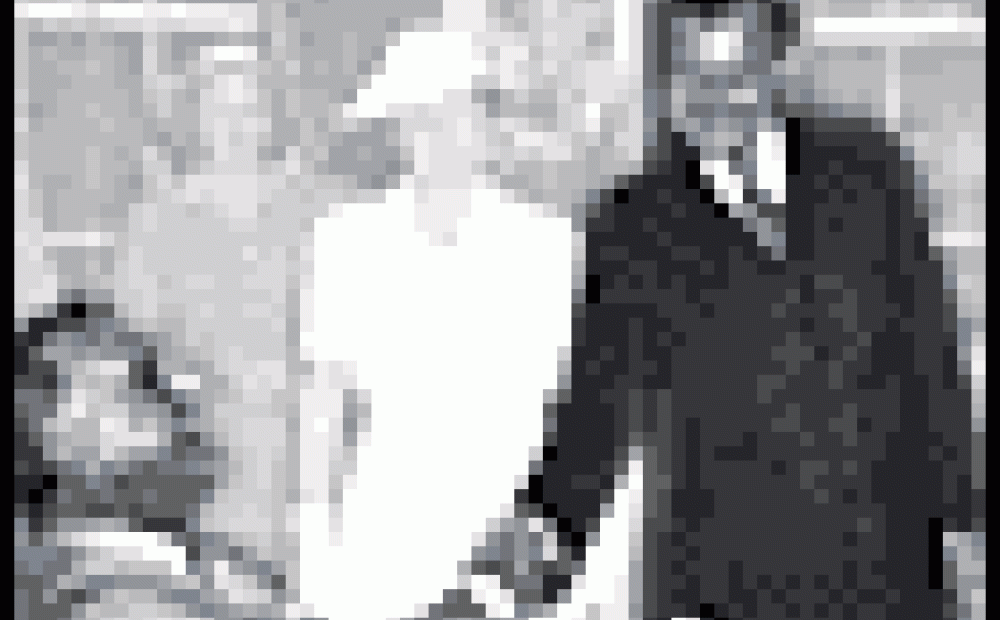Justice Robert H. Jackson's <i>That Man: An Insider's Portrait of Franklin D. Roosevelt</i>

"It was as though I felt my phone starting to vibrate," said John Q. Barrett, describing his reaction when he first heard of Justice Robert H. Jackson's manuscript for a memoir about President Franklin Delano Roosevelt. Jackson's draft—which had been put away by his son after Jackson died and rediscovered only after the son's death—came as a surprise to the historian who had spent hours reviewing all of Jackson's papers for a biography of the Supreme Court Justice. With the agreement of the Jackson family, Barrett began to fill in the gaps in Jackson's work with excerpts from his public papers, interviews, and personal notes.
Barrett completed the picture of the private Roosevelt by following the eight categories—"That Man" in the White House and as a politician, lawyer, Commander-in-Chief, administrator, economist, companion and sportsman, and leader of the masses—sketched out in Jackson's outline. His presentation, at a session organized by the Division of United States Studies, traced the life and political development of Jackson from his interactions with "Frank" Roosevelt in New York state politics to those with "Franklin Delano" as FDR moved onto the national scene. He described the intensification of their personal and professional relationship in Washington after Roosevelt was elected president in 1932 and Jackson accepted a 1934 appointment as general counsel of the national tax bureau.
Roosevelt liked and admired Jackson and appointed him to positions of increasing importance: working as a special prosecutor in the government's case against Andrew Mellon, for the Securities and Exchange Commission, with the tax division and the antitrust divisions of the Department of Justice and, in 1938, as Solicitor General. During Jackson's tenure in that position, Justice Louis Dembitz Brandeis commented that Jackson was so masterful in argument that he "should be Solicitor General for life." Jackson argued the constitutionality of numerous New Deal programs before the Supreme Court, was promoted to Attorney General in 1940 and then, in 1941, was appointed to the United States Supreme Court.
Some of the most significant moments of Jackson's career, however, were yet to come. His reputation was so impressive that Truman appointed him chief American prosecutor at the Nuremburg war crimes trial of Nazi leaders. His work at Nuremburg and his opinions as a Justice have earned Jackson a reputation as a defender of civil liberties in an era before civil liberties gained the place they hold in American law today. Barrett attributed Jackson's libertarianism to his upbringing as one of a few Protestants surrounded by Catholics and one of a few Democrats in a predominantly Republican region, and argued that Jackson's formative experiences instilled in him an abiding belief in the rights of the minority. This orientation explained his eloquent support of the rights both of Jehovah's Witnesses whose religion led them to abstain from saluting the American flag (West Virginia v. Barnette, 1943) and of Japanese-Americans who unsuccessfully protested their wartime internment in Korematsu v. United States (1944).
Barrett considers much of the value of That Man to be what he described as the contrast between Roosevelt and Jackson. Jackson was a quintessential lawyer, having owned an all-purpose law practice for 20 years before going into public service. He came to love the craft and procedures of the law and the legal profession. Roosevelt, on the other hand, had no patience for legal intricacies and as a wartime president cared only about the results his staff was able to achieve. FDR's approach contrasted sharply with Jackson's devotion to civil liberties and led to tension between the two men on a number of occasions, particularly when Roosevelt permitted J. Edgar Hoover to use FBI wiretaps despite Supreme Court prohibitions against them. Roosevelt cited national security; Jackson argued unsuccessfully for the Constitution. Barrett called the civil liberties issues and claims of unilateral presidential authority that Jackson encountered as Attorney-General "hauntingly similar" to those the nation faces today.
Barnett, who graduated from Harvard Law School in 1986, spoke with great authority about the Roosevelt administration, but David Ginsburg, a 1935 graduate of that institution, was present at the creation. Ginsburg may in fact be the oldest living member of the Roosevelt administration. He was initially sent to Washington by Felix Frankfurter, his former Harvard Law professor, to work with the Securities Exchange Commission. He followed William O. Douglas from the SEC to the Supreme Court, later serving as general counsel for the Office of Price Administration. Ginsburg reminisced about sitting in a boat with Douglas during the summer of 1939 while the justice fished and his young clerk read Court petitions aloud. To the delight of the audience, he spoke of working with "Ben and Tom" (Benjamin V. Cohen and Thomas Corcoran) during his SEC years. He watched Cohen and Robert Jackson argue the constitutionality of the Public Utility Holding Company Act, a key New Deal statute, in the Supreme Court (Electric Bond and Share Co. v. SEC, 1938), and joined them in hiring a young man named Dean Acheson. For those who were not there, "the best book on American history of that period that I have ever read," Ginsburg declared, is Jackson's That Man.
Philippa Strum and Ann Chernicoff, Division of U.S. Studies 202-691-4129